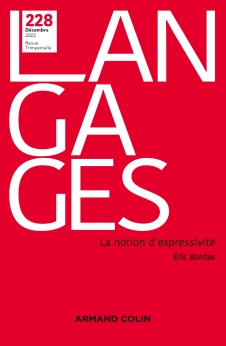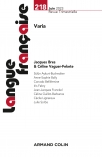
LANGAGES Nº 228 (4/2022)
Pour acheter ce numéro, contactez-nous
Recevez les numéros de l'année en cours et accédez à l'intégralité des articles en ligne.
Cette contribution a pour objectif de décrire la place qui a été accordée au concept d’expressivité en linguistique historique, en particulier en ce qui concerne la linguistique française. Après avoir remarqué que cette notion est déjà en germe chez certains grammairiens de l’époque classique, on observera la situation au début du XXe siècle, avec l’examen des idées de Bally, et on s’attachera à déterminer la place qu’occupe la notion d’expressivité dans l’oeuvre de Meillet, et quel rôle elle joue pour lui dans l’évolution de la langue. On étudiera ensuite comment les travaux plus récents sur la grammaticalisation, à partir des années 70, mettent en oeuvre une notion très proche de la notion d’expressivité, la notion d’intersubjectivité et comment cette dernière se trouve exploitée de deux manières, selon que l’accent est mis sur la dimension communicationnelle ou sur la dimension énonciative.
The aim of this paper is to describe the place that has been given to the concept of expressivity in historical linguistics, particularly as regards French linguistics. After noting that this notion is already in the making among grammarians of the classical period, the situation at the beginning of the 20th century will be observed, with an examination of the ideas of Bally. We will determine the place that the notion of expressivity occupies in the work of Meillet and what role it plays for him in the evolution of language. We will then study how more recent work on grammaticalization, from the 1970s onwards, uses a notion very close to the notion of expressivity, the notion of intersubjectivity, and how the latter is exploited in two ways, depending on whether the emphasis is placed on the communicative dimension or on the enunciative dimension.

